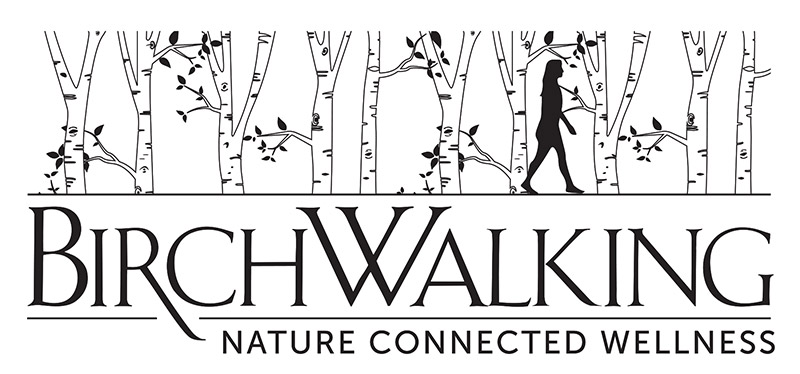Frequently Asked Questions
FAQs
What is Forest Therapy?
Forest Therapy is a research-based framework for supporting healing and wellness through immersion in forests and other natural environments. Forest Therapy is inspired by the Japanese practice of shinrin yoku, which translates to “taking in the forest atmosphere” or “forest bathing.” Studies have demonstrated a wide array of health benefits, especially in the cardiovascular and immune systems, and for stabilizing and improving mood and cognition.
Shinrin-yoku was developed in Japan during the 1980s and has become a cornerstone of preventive health care and healing in Japanese medicine. Researchers primarily in Japan and South Korea have established a robust body of scientific literature on the health benefits of spending time under the canopy of a living forest. Now their research is helping to establish shinrin-yoku and forest therapy throughout the world.
What happens on a Forest Therapy Guided Walk?
On a forest therapy guided walk. the guide encourages participants to activate all their senses to foster an immersive experience with the natural world. The walk includes an orientation, invitations to activities to enhance immersion with the forest and the senses that may include independent wandering and sitting interspersed with the opportunity to share. A special tea ceremony with snacks is held at the conclusion. The guide will make available mats and stools for participants if requested in advance of the walk. Participants are also encouraged to bring their own. Walks are held rain or shine.
Can People with Disabilities Participate on a Forest Therapy Guided Walk?
Yes, it is possible to adapt the experience to the participant. Forest Therapy Guided walks can be modified so that anyone can participate. For example some ‘walks’ have been held in nursing homes where people are not mobile or able to go outside. There the guide modified the experience to bring the forest inside. Please note; it is important for the guide to be aware of a disability prior to the walk to modify the experience to be accessible. This may require changing the location of the walk; the types of invitations that are crafted and other actions.
What is a Certified Forest Therapy Guide?
A certified forest therapy guide encourages participants on a walk to connect with the natural world. He or she is not a therapist as a result of completing the certification. The forest provides the ‘therapy’. The Association of Nature and Forestry Guides and Program’s certified forest therapy guide training builds on the practices developed in Japan drawing on the latest medical research, new developments in the field of nature connection, and ancient traditions of mindfulness and wellness promotion. In this training guides learn skills that are applicable in any forest ecosystem or bioregion. They can be adapted to other natural settings besides forests, and are also effective in human-built environments such as city parks and botanic gardens. They can be readily integrated with health promotion, psychotherapy, social work, recreation, nature education, employee wellness programs, conservation efforts and many other specialties.
It is a six-month training that begins with a week-long immersion and education with experienced forest therapy instructors, which is followed by a field practicum consisting of a series of structured assignments completed over a series of six months. During the practicum trainees are supported by mentoring via phone or skype and by monthly group conference calls with other participants in their cohort. Completion of a detailed curriculum is required for certification as a Certified Forest Therapy Guide (CFTG).
What are the physical requirements of practicing or training in Forest Therapy?
Forest therapy does not engage in activities that require a great deal of physical exertion. Part of the appeal of Shinrin-Yoku-inspired forest therapy is that it is highly accessible to people with a wide range of fitness abilities and conditions. No physical exertion is encouraged or facilitated by the practice or during our trainings.
Where can I find out more about the health benefits of this forest therapy guided walks?
For more information about the health benefits visit the Association of Forest and Therapy Guides and Programs Science page.
How long is a typical forest bathing experience?
Stay as long as you feel comfortable. Based on research, 2 – 3 hours is the recommended time for a forest bathing session, but if you’ve got a busy schedule then even just 15 minutes a day in nature can help you to feel refreshed. Our programs are crafted to the needs of individuals, teams, and organizations and can be designed based upon best availability and experience for participants.
Can’t I just go for a walk in the woods myself?
Yes, research has shown that being in nature walking, hiking, gardening, kayaking all can provide some health benefits. However, during Forest Therapy/Bathing, the certified Forest Therapy Guide will facilitate numerous activities to increase your mindfulness of the natural world around you and connect you to your surroundings through your senses of sight, smell, taste, hearing and touch. Studies from across the world are confirming that walks in nature guided by certified guides may have broader and more extended health benefits.
I’ve experienced trauma and am not sure forest bathing or mindfulness are right for me?
All nature connected programs at BirchWalking are trauma informed practices. Prior to participating in BirchWalking programs, all participants will be asked to provide health information that may inform our services and ensure the safety of all participants.

Get In Touch
Contact Christine and Suzanna to discuss your individual, family, team, group, or organizational needs and codesign a nature connected wellness experience oriented towards building resiliency and capacity for all humans and beings to live well and thrive together.
